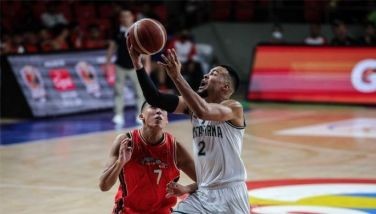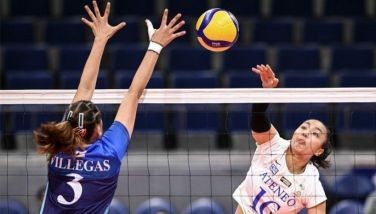What begets violence in sports?
Outbreaks of violence in sporting events have a long history, dating back to Roman times, the worst of which occurred after a chariot race in the year 512. Spectators poured out into the streets of Rome for several days, claiming up to 30,000 lives, as cited by the book “The King of Sports” written by Desmond Morris in 1981. Partisanship in sports will always be a root of conflict, sometimes reaching spectacularly unreasonable heights.
In a hefty, 263-page study entitled “Youth and hooliganism at sports events” published by the Organization for Security and Co-operation in Europe (OSCE) Mission to Serbia, four researchers analyzed what spurs outbreaks of violence in European sports. With the support of the Ministry of Education, Science and Technological Development, Professors Sas?a Milojevic?, PhD and Branislav Simonovic?, PhD and Bojan Jankovic?, MSc, Boz?idar Otas?evic?, MA and Veljko Turanjanin, MSc recorded and tallied instances of fighting, throwing, property damage and other breaches of security protocol around Europe to learn its causes and possible prevention. They even compare football fan violence in Europe to American and Canadian incidents, and found European sports violence to be more prevalent and acute.
The study first defines violence and outlines the crimes of violence as defined by Serbian law. Then it states that violence is committed by sports persons such as players and coaches and even doctors, for some form of gain.
“Namely, sportspersons not achieving the desired level of aggressiveness may get discouraged through criticism by their parents and the coach, or by having their playing time shortened, which represents a special form of punishment (Kokovic?, 2001: 132). Disturbance by rivals or spectators is also a form of punishment. In contrast, by manifesting aggression, sportspersons may be awarded money, better initial positions in play, or greater respect by coaches, spectators or friends. It is therefore no wonder that one can read in “memoirs” of former sportspersons all tricks of trade they were taught, the ways in which they were stimulated, and what they were requested to do by their coaches and sometimes even by their doctors, just for the sake of winning, including the non-sporting means they used to accomplish the set objectives.”
This clearly illustrates the use of force as a shortcut to success on the playing field, reinforcing the widely-known and demonstrated fact that coaches will also get players to hurt one another to win games at all levels. The study goes on to link, then differentiate, the behavior of street gangs and extreme fans. Street gangs have had no influence on Philippine sports events. But the details of their distinction from mere fans clubs are interesting.
“The common elements of street gangs and extreme fan groups are the following: the internal structure, the leader, rules of behavior within the group, regular meetings of members and territoriality. However, differences between extreme fan groups and street gangs do exist, though they are hardly visible at first sight. As the matter of fact, extreme fans act in public places and seek media attention. In contrast, gangs are smaller in number and do not expose themselves publicly as fan groups. Besides, hooligans lack fixed hierarchy which is much clearer in case of street gangs. Extreme fans use sports as a motive for violent behavior, while motives in the case of street gangs may be different, whilst the objective is usually of lucrative nature (Ðoric?, 2012: 80). Furthermore, fan violent criminality differs from other criminal activities also in terms of motivation which is usually unclear or cannot be determined with certainty. Unlike other perpetrators of criminal offences and misdemeanors, who avoid contact with the police, fan groups express violence and misbehavior also towards police members.”
The study then defines hooliganism as individual physical assaults at other fans or passersby, fights between opposing fan groups, throwing of pyrotechnics (not known to be done in the Philippines), introduction of objects which may threaten the lives of players or derail the course of the match, consumption of alcohol and drugs; invasion of the playing area the with intent to stop the game, damage to property, damage to or destruction of vehicles, not paying bills in restaurants around the venue, writing graffiti in public places, on public transportation, buildings, elevators and monuments. These actions were found to have been caused by a combination of individual personal traits and external forces. Some types of people were found to be more susceptible to violent behavior, particularly those who had experienced the frustration of negative reinforcement and constant criticism or invalidation in their family life or work. In layman’s terms, they sought an outlet or an object to take their frustrations out on. But some fans would go to a sporting event with the intention of committing acts of violence, which occurs far less frequently in the Philippines, if at all.
The study explores all the different approaches to fan violence, and found some defects in repressive approaches, such as more police visibility, more thorough security checks, and similar procedures. They consider that, for the long-term, alternative means and changing the culture and thinking of youth will be a more permanent solution to the eruption of violence on football and other sports. Schools and local governments are encouraged to get involved.
One influence that is common to both European football and Philippine basketball, for example, is the familiarity with opposing players and to a certain extent, referees. Fans recognized a certain athlete’s tendency to be rough, and they gain a reputation for bending the rules with their behavior during play.
Fans therefore have a greater inclination to be hostile towards that player to begin with. They anticipate his dirty tricks, and sometimes, precipitate them. Fortunately, Filipinos are, by nature, more conservative, and this helps minimize fan violence, often limiting it to verbal outbursts. Also, families tend to watch sports together, and this places a natural deterrent to violence. Over a decade ago, the UAAP forbade the use of oppressive language in signs brought in by students and alumni, and this has contributed a lot to limiting abusive language and violent outbursts. And spectators actually assaulting a referee is virtually non-existent, but it has happened a few times in European football.
In this writer’s opinion, other probable reasons why hooliganism is more prevalent in European soccer than in sports in the Philippines include the cultural differences and the commonality of indoor sports versus outdoor sports in the country. Traditions such as the playing of the national anthem, reminders from league authorities, and other pre-game rituals help curb physicality to a degree. Also, football fans travel great distances and sit or stand exposed to the elements, this and the availability of alcohol at some venues adds to fatigue, discomfort and impatience, particularly since much of Europe can get very cold.
Lastly, perhaps the choice of sport also has a big influence. Historically, Filipinos have gravitated to high-scoring sports, where fan gratification is very high. Basketball, boxing, billiards and even other sports like badminton and bowling allow for constant scoring. Fans can vent their frustrations and experience some relief every time their team scores over its rival. So a blocked shot or act of shooting foul in a local basketball ball game has far less weight than an attempt at goal foiled by rough play in a European football match. Also, it takes time for a blowout to take place, so fans of the losing team will have had at least a few minutes to accept their team’s fate, and they can’t really blame anyone else if their team is down by 20 points.
- Latest
- Trending































